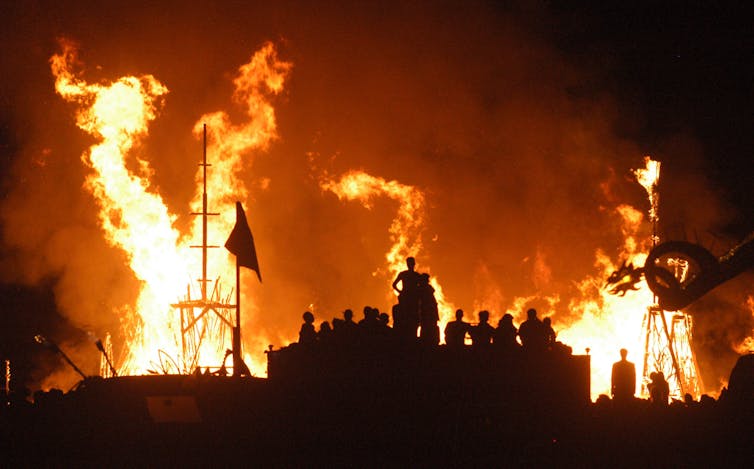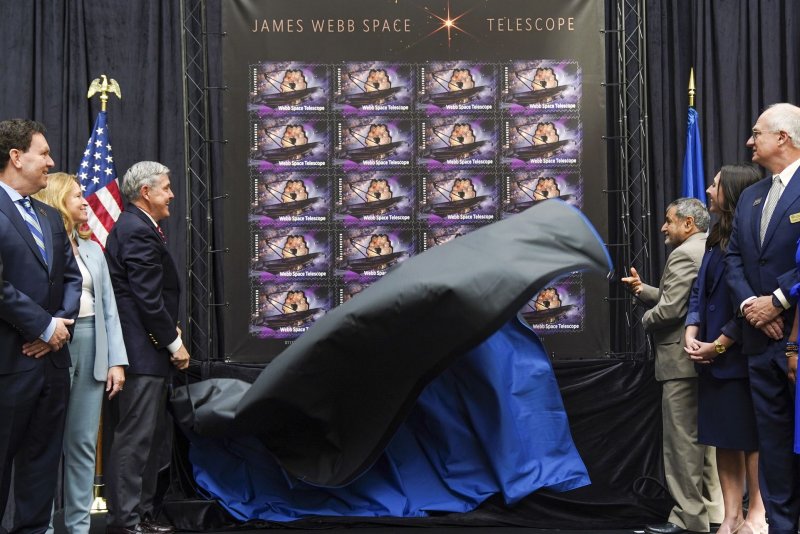2022/09/10

Ceiling fans can be helpful, but for many of the 24% of California households across the state without A/C, the latest heat wave has been a misery and a health hazard. - Dreamstime/TNS/TNS
SACRAMENTO, Calif. — In her Stockton apartment, Esther Johnson has been freezing pots of water overnight for relief from California’s historic heat. In the morning, she wraps them in towels, puts them at the foot of the couch and blasts them with fans to create some cool air.
It was 107 degrees outside on Tuesday, the day several cities broke all-time heat records. Inside, it was 96 degrees.
Californians blasted their air conditioning so much this week they nearly overwhelmed the state’s electricity grid. For many of the 24% of households across the state without A/C, each day has been a misery and a health hazard.
“You know when you go into a sauna? It’s like that,” said Johnson, 64, who is recovering from double knee surgery. Her A/C unit has been broken since June, and her landlord isn’t rushing to fix it. “My face is dripping and everything.”
California law and building codes require residential units to maintain temperatures of 70 degrees inside during cold weather. But there is no requirement for air conditioning or other cooling mechanisms to keep residents safe from the extreme heat, which is quickly becoming our routine heat.
Robert Brooke-Munoz, director of San Joaquin Fair Housing, said immediate help is needed for renters whose landlords aren’t fixing A/C units simply because the law doesn’t require them to.
“There’s got to be tighter laws and regulations on air conditioning especially because of the heat and our changing climate,” said Brooke-Munoz, who has been getting daily calls from tenants about broken cooling systems. “This is the worst I’ve seen it.”
Extreme heat is the most deadly symptom of climate change, primarily impacting low-income renters and the elderly. Despite California’s reputation as a strong regulator, the state has moved slowly to create temperature standards that would enforce cooling the same way it does heating.
A bill in the state legislature this year that would have set cooling standards was stalled by opposition from the California Apartments Association. Instead, the state is tasked with forming policy recommendations by 2025, a timeline that is almost sure to include more heat waves.
Jovana Morales-Tilgren, housing policy coordinator at the Leadership Council for Justice and Accountability in Fresno, which led the legislative push, said her organization hopes to move that complicated process along as quickly as possible.
“These issues are happening now and folks feeling it the most are vulnerable populations,” she said. “This heat wave is going to happen again, and who knows if it will be even hotter.”
SACRAMENTO, Calif. — In her Stockton apartment, Esther Johnson has been freezing pots of water overnight for relief from California’s historic heat. In the morning, she wraps them in towels, puts them at the foot of the couch and blasts them with fans to create some cool air.
It was 107 degrees outside on Tuesday, the day several cities broke all-time heat records. Inside, it was 96 degrees.
Californians blasted their air conditioning so much this week they nearly overwhelmed the state’s electricity grid. For many of the 24% of households across the state without A/C, each day has been a misery and a health hazard.
“You know when you go into a sauna? It’s like that,” said Johnson, 64, who is recovering from double knee surgery. Her A/C unit has been broken since June, and her landlord isn’t rushing to fix it. “My face is dripping and everything.”
California law and building codes require residential units to maintain temperatures of 70 degrees inside during cold weather. But there is no requirement for air conditioning or other cooling mechanisms to keep residents safe from the extreme heat, which is quickly becoming our routine heat.
Robert Brooke-Munoz, director of San Joaquin Fair Housing, said immediate help is needed for renters whose landlords aren’t fixing A/C units simply because the law doesn’t require them to.
“There’s got to be tighter laws and regulations on air conditioning especially because of the heat and our changing climate,” said Brooke-Munoz, who has been getting daily calls from tenants about broken cooling systems. “This is the worst I’ve seen it.”
Extreme heat is the most deadly symptom of climate change, primarily impacting low-income renters and the elderly. Despite California’s reputation as a strong regulator, the state has moved slowly to create temperature standards that would enforce cooling the same way it does heating.
A bill in the state legislature this year that would have set cooling standards was stalled by opposition from the California Apartments Association. Instead, the state is tasked with forming policy recommendations by 2025, a timeline that is almost sure to include more heat waves.
Jovana Morales-Tilgren, housing policy coordinator at the Leadership Council for Justice and Accountability in Fresno, which led the legislative push, said her organization hopes to move that complicated process along as quickly as possible.
“These issues are happening now and folks feeling it the most are vulnerable populations,” she said. “This heat wave is going to happen again, and who knows if it will be even hotter.”
Californians without cooling
Mario and Elvia Garcia have been buying ice every day to try and keep their five kids cool in Lamont outside Bakersfield.
They get back from school sunburned to a home that’s over 90 degrees inside. At night, they all sleep together on the living room floor, near the most powerful fan.
Fearing a rent hike, they haven’t asked their landlord for an A/C unit. But Mario said government officials need to “go back to the drawing board” and figure out solutions. Maybe solar panels, or subsidies for landlords to install cooling.
“They need to make it right so people feel comfortable in their home,” Mario said.
Extreme heat has become increasingly common in the Golden State with the onset of human-induced climate change. It is the most deadly weather event nationwide.
The percentage of households without air conditioning ranges across the state, as high as 54% in historically cooler San Francisco metro area and as low as 20% in Los Angeles, according to the U.S. Census Bureau’s 2019 American Housing Survey.
An LA Times investigation last year found that California under counts the number of people who die from extreme heat, reporting that the recorded 599 deaths between 2010 and 2019 is likely six times higher.
A growing body research also shows that extreme temperatures disproportionately affect low-income people and people of color, particularly in underserved neighborhoods of denser urban areas.
New data from the Department of Energy show a disparity between single family homes and multifamily rentals too. In California, 67% of multifamily housing units in the state lack central A/C compared to 33% of detached single family homes, according to an analysis by UC Davis Professor C.J. Gabbe.
Making landlords sweat
AB 2597 by Assemblyman Richard Bloom, D-Santa Monica, would have directed officials to create statewide standards for safe indoor temperatures.
The measure was opposed by the politically potent rental housing industry and other real estate interests, who would be on the hook for retrofits of existing buildings with air conditioning or other forms of cooling.
Any changes to the code for new buildings would also have to go through the Building Standards Commission at the Department of General Services, which adopts a new code only every three years.
Instead of passing the bill, lawmakers put $5 million in the state budget for the Department of Housing and Community Development to develop recommendations to the legislature to ensure that residential units can maintain a safe indoor air temperature.
A spokesperson for the department said “it is premature to comment at this time” when asked about plans to form recommendations.
In a statement on the original bill, California Apartment Association executive vice president Debra Carlton said that “changing the rules for existing buildings is not feasible in many cases.”
Older homes and apartments are not designed to allow for installation of new cooling system, she said, adding that new A/C systems would further strain the state power grid.
After releasing an extreme heat plan this April, California created an advisory committee to study its effects on California’s economy. It sent workplace safety standards, meant to prevent heat illness among outdoor workers, to Newsom’s desk.
New temperature standards are expected to vary across the state depending on local climate, as enforcement protocols are worked through and landlords figure out how to pay for it.
UCLA urban planning professor V. Kelly Turner pointed to the many ways buildings can keep residents cool other than A/C, like using trees and central plazas for shade. But the most important thing is that it gets done soon.
“It’s glaringly obvious that it’s insufficient when it’s illegal to rent a home that’s too cold, but perfectly legal to rent a home that’s too hot,” she said.
The results of this year’s legislative session are “a good step forward,” said Brian Augusta, a legislative advocate representing the California Rural Legal Assistance Foundation.
“This week’s weather tells tells the story. We’re gonna see more events like this, and I think there will be increasing pressure to act more urgently but we’re on a path now.”
———
© The Sacramento Bee














.jpg)

.jpg)

